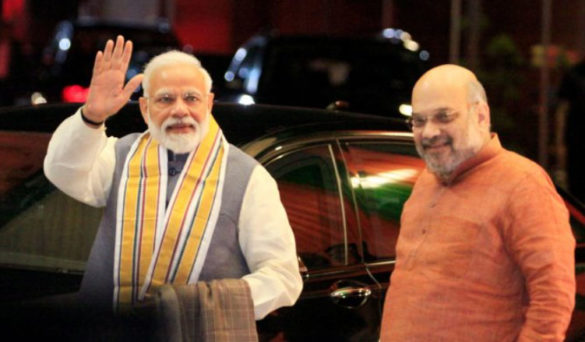
Modi-Shah’s Aksai Chin bravado activated China’s Ying Pai to cross LAC
Hopeful headlines have now given way to a realisation that all is not ok at the heights in Ladakh, where India and China are eyeball to eyeball. Well, retinas are not really visible since some Chinese trucks have pulled away, but the ground forces of the People’s Liberation Army remain in areas they weren’t before April 2020. The Narendra Modi government in New Delhi can try hard to keep a lid on it, or sweep it under the carpet, but the sad truth is out now.
While ‘un-named’ military sources are prone to be discounted by those who don’t want to believe the incursion in Ladakh, a local BJP councillor confirms Chinese intrusions at unprecedented levels. Konchok Stanzin, representing Chushul in the Leh Autonomous Hill Development Council, is on record to authenticate Chinese intrusions.
Something has changed in 2020, and the tone and tenor of the official Chinese media has been in stark contrast to what happened during the last border crisis at Doklam in 2017. In September that year, Maj. Gen. Qiao Liang wrote a remarkably conciliatory opinion piece as the Doklam crisis tapered off. Nothing unusual for a military man to write a pacificatory article, but Maj Gen Liang had also co-authored a path-breaking monograph in the mid-1990s, setting off alarm bells in democratic militaries. His Unrestricted Warfare has become essential reading for an insight into the PLA. So for him to write, “China and India are both neighbors and competitors, but not all competitors must be treated in the toughest way”; and, “Many people would say that the road construction in China’s territory was none of India’s business. Is this belief right? It is reasonable to some extent because road construction in this area is not a matter of right and wrong… Only doing the right thing at the right time is correct” — is something worth noting.
India’s permanent mystery
So, is Summer 2020 ‘the right thing at the right time’ moment for China? Indian observers, both military and diplomatic, have struggled to answer, ‘why now?’ It is a mystery that remains unanswered for two simple reasons.
Beijing has never been particularly transparent about its military postures and policies; and, more importantly, India has never demonstrated an insight into how China works. Despite centuries of interaction, India’s awareness and knowledge of China’s functioning is still woefully inadequate.
Unlike other surviving civilisational states, China has largely retained its ‘court’-inspired governance culture, and a firm belief in its centrality to human existence. As in all such courts, there are factions, and in China there is an increasingly influential military-bureaucratic grouping called Ying Pai, hawks or eagles.
“Many of these ying pai are generals and admiral and government hard liners… They are the Chinese officials and authors I know the best because since 1973 the US government has instructed me to work with them… To me, they represent the real voice of China,” wrote Michael Pillsbury in The Hundred-Year Marathon: China’s Secret Strategy to Replace America as the Global Superpower (2015).